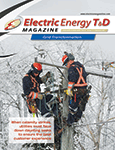It is 2008 and a company, let’s call them Mechanical and Electrical Contractors or ‘MEC,’ has 800 technicians on both project-based and support contracts. The company targets the mining industry and large government projects but is underpinned by a substantial facilities management and HVAC division. As a successful company underwritten by solid finance companies, MEC set its sights on a growth strategy to delight shareholders.
For expansion, MEC executives realized they must gain greater consistency in processes both across and within divisions. By example, the company maintains the mobile tower installations of some of the national telecommunication carriers and reporting varies by state. In one state, every visit to a tower resolves in an invoice with a consolidating month end statement while in another state all visits within the month are entered into a local Excel log and a single invoice is dispatched to the carrier at month end. Furthermore, each telco asks for proof of attendance within the agreed service level contract and MEC can only provide an Excel sheet at the end of the month. Both parties understand that the Excel sheet is managed so all SLAs (service level agreements) are met and penalties avoided.
With the inconsistencies described above, MEC decided that a mobile app integrated with its billing system could be both a change agent in enforcing universal processes and improving their customer satisfaction. Moreover, with better processes in place, MEC’s growth strategy would be more achievable as many of the current administrative constraints are removed.
So, MEC puts out an RFP (request for proposal) for mobile application vendors. The final three vendors have comparable solutions but the costs are strongly in contrast. MEC chose the solution that was license free despite no onshore support as it is under their telco’s offerings and fully subsidized by the telecommunications spend.
Ten months later, the app and the integration are completed and ready for implementation with the pilot group of forty HVAC technicians in the first city. The costs have been substantial in both getting the app to work within their business environment and to achieve integration to their back office environment, more than double budget. They have also chosen a rugged PDA (personal digital assistant) sourced from the telco, which was free as well and again with no onshore support or maintenance.
The technicians weren’t happy. The new procedures were different from established processes which caused problems but the biggest issue was reliability. Both the rugged PDA and the app were failing often, with confidence in new technology quickly eroding in just weeks. The project team regroups and recalls the devices and software but changes are slow with no local support and escalating through the telco changes literally take months. When reissued the solution was much improved but still not rock solid and the technicians thereafter actively refused to participate. In their view they are doing paperwork twice – once in the PDA and another on paper when the systems fail. Management halts the project.
This is a true story and what they did next was astounding – they asked the deep questions on why they had failed and decided that it was a systemic issue in their company and not just a poor vendor choice. The strategy pivoted to focus on addressing process issues before moving forward to automate them via a mobile deployment. It took two years and a number of management changes but at the end of it they had agreed processes that were uniform within each division. Then they went back out to market for a mobile solution.
When they went back out to market in late 2011 they had a substantial laundry list of must-have features for their required solution:
At the top was reliability – the absolute necessity for the technician to see the mobile solution as a tool of trade and if something goes wrong then data can be recovered on the job in just minutes. Similarly, this drove a technology requirement for the app to work out of coverage for up to a whole day.
Next on the list was workflow. The app needed to reflect MEC’s workflow and not some idealized solution constructed by a software company. A service company differentiates itself by how it delivers its services to customers, so unlike billing solutions that can be the same as your competitors and not affect your competitiveness, the mobile app directly impacts the service and thus, competitiveness. Without reflecting MEC’s workflow, technicians would not adopt the solution and productivity gains would not be met.
The third requirement was quality and timely support. Mobility has constant changes in operating systems, regional telecommunication network variations and end user problems that demand rapid problem resolution. Field service projects generate MEC’s revenue, therefore they were seeking a stellar solution.
Lastly, was an identified need to easily change workflow and the data captured or referenced within the app. MEC had learnt that the app needed to reflect both their acquisition of new customers with their correlating information requirement and the reality that their internal needs kept evolving and needed to be reflected in the mobile solution.
There were pages more of specific requirements but the above were the stand outs, the key lessons learned from the first failed project. After selection of a quality vendor, MEC was running the first field deployment in six months. It is also noteworthy that in selecting the hardware they formed a selection committee of key stakeholders, predominantly the thought leaders in their technician groups, to ensure field acceptance of the devices.
Today, MEC’s entire fleet is mobilized. It’s successfully running a sophisticated application that is fully integrated with the asset management system, driving procedures in the field with over 1000 asset variations. Mobility has allowed for full transparency with customers concerning when technicians are on site. To achieve the formerly mentioned SLA regarding proof of attendance on a job, activity is time stamped via the application so travel charged to the customer and non-productive time is all captured. Parts used, purchases made, customer signatures, site history and safety compliance are all part of the application functionality. The new solution has been live for less than two years and MEC just completed its third business change revision to the app, which will be distributed to field technicians in just minutes the next time they turn on their tablet.
MEC’s imagination has gone mobile. By example, they deployed a mobile app last year to their field supervisors, which allows them to see where each member of the team is and what they are doing. This year, the company will focus on integrating mapping and mobile collaboration tools into their solution.
Mobile is a continuing journey and MEC is glad it eventually found the right track.
About the author
 Mary Brittain-White, CEO of Retriever Communications has 20 years in the wireless data industry, of which 16 years have been with Retriever. She has established herself as a thought leader in the area of wireless field automation. Prior to founding Retriever, Mary worked for a Silicon Valley based Motorola subsidiary, RadioMail, which pioneered wireless email. From University Mary joined IBM and over a 14 year career there held Sales and Marketing executive management roles. Mary has Bachelor of Economics from Sydney University and a post graduate Executive Development program from Melbourne University.
Mary Brittain-White, CEO of Retriever Communications has 20 years in the wireless data industry, of which 16 years have been with Retriever. She has established herself as a thought leader in the area of wireless field automation. Prior to founding Retriever, Mary worked for a Silicon Valley based Motorola subsidiary, RadioMail, which pioneered wireless email. From University Mary joined IBM and over a 14 year career there held Sales and Marketing executive management roles. Mary has Bachelor of Economics from Sydney University and a post graduate Executive Development program from Melbourne University.







